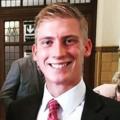Glaxo's Ulverston factory had won a group competition for the second year running in 1995.
Sir Richard Sykes, deputy chair and chief executive of Glaxo, was set to visit the North Lonsdale Road factory to present the award for outstanding achievement in health and safety and environmental management.
It had been won by an Ulverston-developed system for containing dust during the manufacture of tablet powder.
The factory made a whole range of prescription drugs, most of them antibiotics.
The Ulverston dust containment system was being tried out in other factories in the group which employed 47,000 people worldwide.
It consisted of a container which allowed powders to flow in a totally contained environment during production.
Ulverston beat 31 other entries and Glaxo director Professor Sir Richard Southwood, who chaired the judges and who wouldtheit Cumbria with Sir Richard Sykes, said: "The winning submissions were outstanding and the judges were unanimous in their choice."
More than 600 schoolchildren discovered some of the secrets of the science laboratory when they attended the Glaxo School Link Lecture in 1995.
Pupils from 19 schools across Cumbria attended the lecture, which was given on two separate occasions at Barrow Sixth Form College and once at the Victoria High School in Ulverston.
The children were entertained by Professor Brian Iddon, a lecturer at Salford University, who had toured extensively in Britain and abroad.
During the talk, entitled The Magic of Chemistry, Professor Iddon demonstrated how to make Perspex, nylon and polyurethane and discussed electronic photography.
In 1996 Don Vickers, cooling water operator at Glaxo Wellcome, scooped a four figure sum from the company's suggestion scheme.
He received his award after pointing out that a cooling water circuit was unnecessarily running for 24 hours a day at the Ulverston factory.
Glaxo Wellcome encouraged workers to participate in the running of the business with ideas like the suggestion scheme.













Comments: Our rules
We want our comments to be a lively and valuable part of our community - a place where readers can debate and engage with the most important local issues. The ability to comment on our stories is a privilege, not a right, however, and that privilege may be withdrawn if it is abused or misused.
Please report any comments that break our rules.
Read the rules here